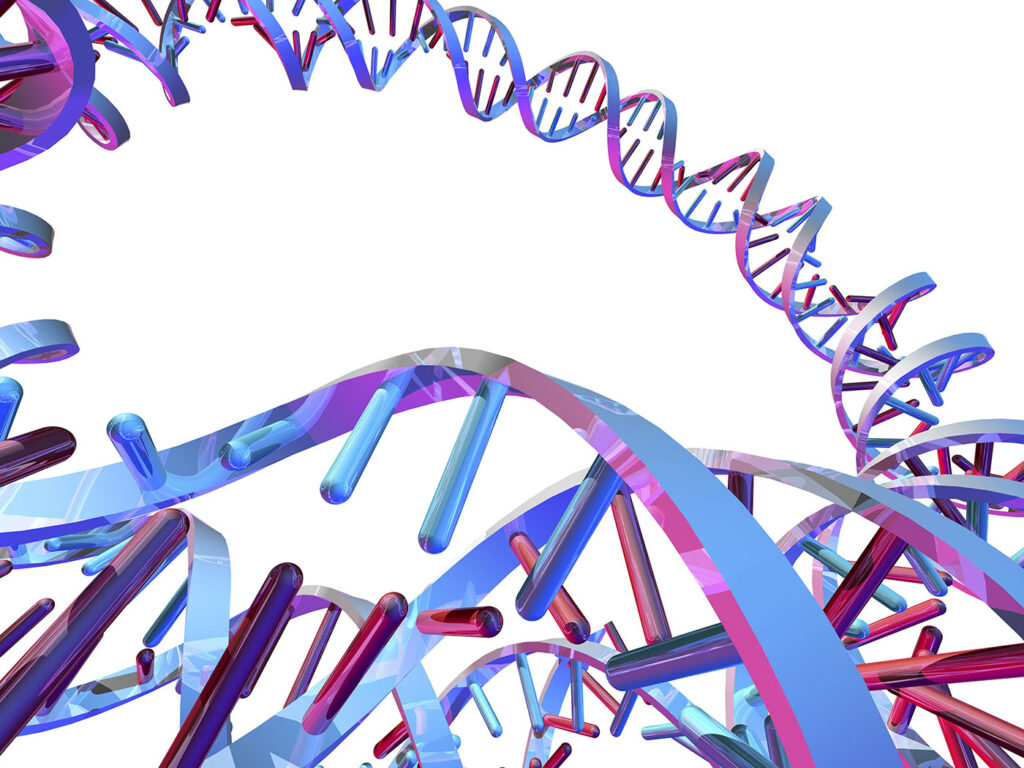Sponsored content brought to you by
As nucleic acid–based therapeutics evolve and mature, so too must the analytical tools that are designed to characterize them. New microfluidic capillary electrophoresis (CE) methods that are designed for analyzing diverse nucleic acid modalities can deliver the kind of precise analyte separation that is necessary for mRNA and gene therapy applications.
While the therapeutic spotlight is largely centered on mRNA vaccines and gene editing systems, the importance of upstream plasmid DNA (pDNA) quality remains paramount. In fact, pDNA is often the starting material for mRNA vaccines, circular RNAs (circRNAs), and gene editing tools and therapies. As such, ensuring the integrity and isoform distribution of pDNA early on improves transcription efficiency downstream and helps therapy developers meet regulatory requirements.
Specialized assays for analyzing complex structures like circRNAs and pDNA isoforms based on Revvity’s LabChip™ GXII Touch™ instrument are designed with the rapidly evolving field of RNA-based therapeutics and the analytical challenges associated with characterizing new modalities in mind. “The LabChip GXII includes optimized reagents and consumables that are made for each class of analyte being analyzed,” explains James White, PhD, R&D Assay Development Lead at Revvity. “Compared to traditional methods it offers faster run times, simplified instrument and chip preparation, accurate results, and minimal sample handling.”
One such assay, designed for pDNA, resolves supercoiled, linearized, and open circular isoforms across a broad range of sizes (3–13 kbp). The method employs custom gel matrices, low-voltage separation, and a tailored sizing ladder with both supercoiled and linear fragments. For scientists working on novel RNA and gene therapy applications, this walk-away assay provides precise sizing and percent purity analysis of pDNA isoforms as well as detecting minor contaminants such as nicked DNA. By using the LabChip platform, “you are able to quickly gain more insight into the composition of your sample,” White says.
Sensitive, reproducible pDNA analysis
The LabChip Plasmid DNA assay delivers strong reproducibility across operators and instruments, with an intra-assay coefficient of variation (CV) under two percent, and inter-assay CVs under six percent for the percentage area of the supercoiled pDNA. Sensitivity studies also confirm a lower limit of detection around 25 pg/µL for linear and open circular isoforms spiked into supercoiled pDNA. Consistent isoform ratios and sizing is obtained across instruments and reagent lots, all critical attributes for working in regulated environments. “We can separate plasmid DNA monomers, dimers, and trimers,” says Dipti Mehta, senior application scientist at Revvity.
For GMP manufacturing, regulators expect greater than 80 percent supercoiled content for pDNA used in mRNA production. Meanwhile, plasmid manufacturing requires less than five percent contaminants for the final product. Revvity’s assay can confirm these parameters as well as quantify low-level impurities and detect early degradation during storage or stress testing.
The LabChip GX-based assay has been benchmarked against high-performance liquid chromatography (HPLC) with a five-sample panel varying in supercoiled and linear content. “We compared LabChip GX data to HPLC and found strong agreement on percent purity with CVs under 4% across the five samples,” says Mehta.

Versatile, flexible assays
The LabChip GXII platform is designed to address critical gaps in characterizing new RNA therapeutics. It includes capabilities for circRNA assessment such as monitoring self-splicing reactions and resolution of circular versus linear species, even when they share the same nucleotide length. By reducing the separation voltage and adjusting gel pore size, scientists can achieve clean peak resolution and reproducible quantitation of circularization efficiency even at low sample concentrations. Further extending the utility of the platform is a dual-dye staining strategy that makes it possible to detect single- and double-stranded RNA contaminants in mRNA formulations.
With methods that are tailored for guide RNAs, circRNAs, LNP-associated mRNAs, and now pDNA isoform analysis, the LabChip GX Touch platform robustly supports the next generation of RNA- and
DNA-based therapeutics.
For research use only. Not for use in diagnostic procedures.

For more information on the LabChip GXII Touch instrument, the LabChip pDNA assay kit, or to discuss data from the validation studies, visit revvity.com.




